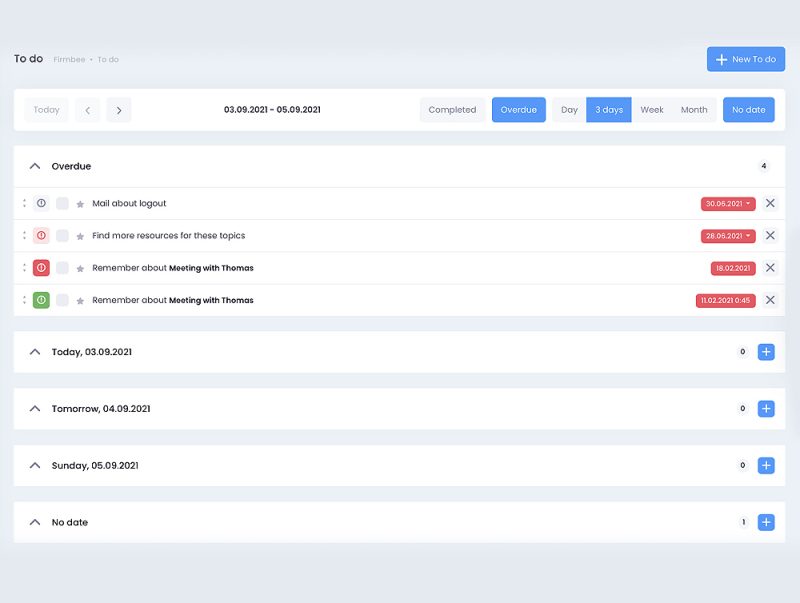Have you ever felt overwhelmed by the number of responsibilities at work? Have you ever stayed awake at night due to a tight stomach and anxiety about tomorrow’s tasks? Have you ever nervously glanced at your watch every now and then at work, begging for time to stop passing so quickly? If so, you should look for a solution to ensure that such negative situations don’t happen again. Check out our 4 simple tips for organizing your work life. Read on.
Tips for organizing your work life – table of contents:
Start from planning
Creating to-do lists and a schedule (weekly, hourly – depending on your needs) is undoubtedly a foundation of organization that you simply can’t resign from. If you want to stay productive and efficient at work, you should plan your day. This is how you will smoothly move from task to task without wasting time.

You can plan your work and create your daily schedule in a planner, calendar or special time management software, the choice is yours! Remember to apply the 60:40 rule – you should only designate 60% of your work day to high-value activities, so that the remaining 40% can be allocated for emergencies, breaks or last-minute tasks.
If an employee considers all tasks to be important and urgent, they will live under constant stress and fail to perform most of their duties. For this reason, it is crucial to properly set priorities and carry out tasks according to their importance and urgency.

Prioritize
However, setting tasks to be done is not enough because it does not solve the basic problem: where you should start. For this reason, as a second step leading to better organization, we will mention prioritization, that is, determining which tasks are more important and should be done first, and which can wait.
The Eisenhower matrix will certainly help you in prioritizing. According to Eisenhower, tasks can be divided into four groups:
- important and urgent – tasks to be completed as soon as possible (e.g., an emergency situation, a deadline for handing over an external project),
- important, but not urgent – tasks that are strategically important, but can be performed at a later date (such tasks are willingly performed by most employees),
- urgent, but not important – usually refer to providing assistance to others in carrying out their tasks (which is not our responsibility) and unplanned duties,
- not important and not urgent – these are activities that are time eaters and promote procrastination.
Another thing that will allow you to improve the organization of your work life is estimating how long it will take you to complete a given task. How will it work? First of all, it will motivate you – you will want to complete the first tasks in the allotted time (or even faster) to realize your entire plan for the day. Secondly, it will allow you to realistically assess how many duties you will be able to complete on a given day. It may turn out that the most important task will take up your entire day and there will be no space to complete any other tasks.
The Pomodoro technique, a time management method developed by Francesco Cirillo in the late 1980s, can be helpful in estimating time and sticking to a plan. It involves working in a 25:5 model – 25 minutes for duties, 5 minutes for rest (repeated in successive cycles) – and allows you to stay in control, remember to take breaks and be focused on the task at hand.
Track your progress
The fourth step leading to a better organization of your work life is controlling the pace of fulfilling tasks and crossing items off your to-do list. This is essential in order to, firstly, plan the next day, and secondly, check how much time is spent on a particular task and make modifications in the future. (e.g., examine why we spent so much time on something we thought was easy). This will allow you to minimize distractions and determine the times you work best.

Summary
The Pareto principle says that 20% of your efforts produce 80% of your results. This perfectly relates to the workplace, but only if you make sure your day is well organized. If you want to increase your productivity, minimize stress factors and feel better about the tasks ahead, don’t ignore the importance of the techniques we’ve mentioned. Planning, prioritizing, estimating and tracking – these activities are not difficult to do, and can bring you a number of positive results in terms of organizing your work life.
Read also: The Pareto principle – 1 great rule for productivity and effectiveness.
If you like our content, join our busy bees community on Facebook, Twitter, LinkedIn, Instagram, YouTube, Pinterest, TikTok.
Author: Caroline Becker
As a Project Manager, Caroline is an expert in finding new methods to design the best workflows and optimize processes. Her organizational skills and ability to work under time pressure make her the best person to turn complicated projects into reality.


















